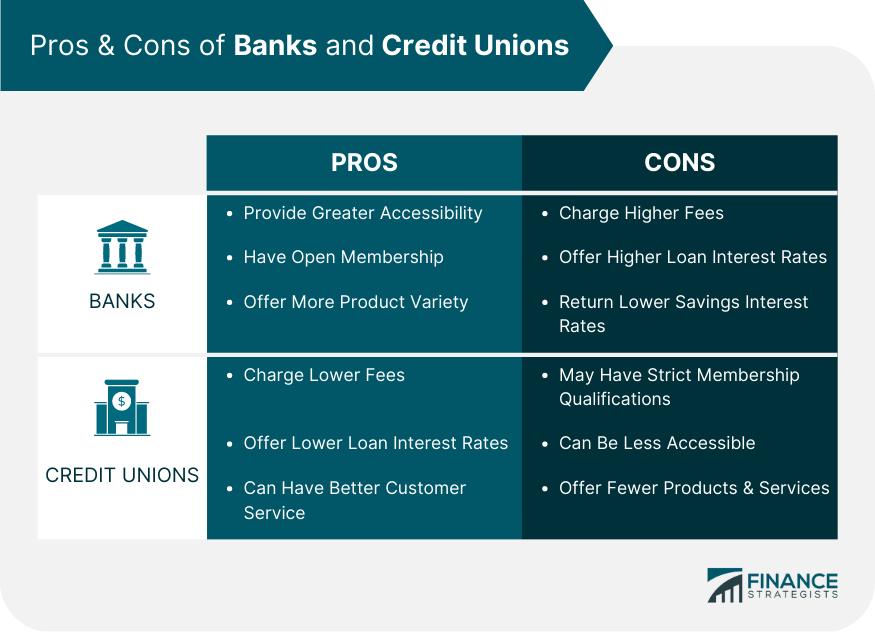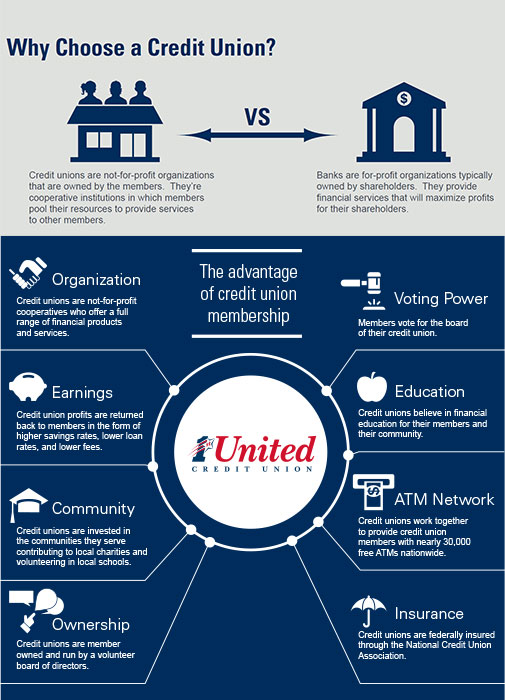Credit Unions in Wyoming: Comprehensive Banking Solutions and Member Perks
Credit Unions in Wyoming: Comprehensive Banking Solutions and Member Perks
Blog Article
The Ultimate Guide to Understanding Lending Institution

Lending institution stand as one-of-a-kind monetary entities, rooted in principles of common assistance and member-driven operations. Past their foundational worths, recognizing the intricate workings of credit unions entails a deeper expedition. Deciphering the intricacies of membership qualification, the development of services used, and the distinct benefits they bring requires a comprehensive evaluation. As we browse via the ins and outs of cooperative credit union, an insightful trip waits for to clarify these member-focused institutions and exactly how they vary from conventional financial institutions.
What Are Credit Unions?
Cooperative credit union are member-owned banks that use a series of financial services to their members. Unlike standard financial institutions, credit history unions run as not-for-profit companies, meaning their primary emphasis gets on offering their participants as opposed to making best use of earnings. Participants of a lending institution usually share a typical bond, such as benefiting the exact same employer, coming from the very same area, or belonging to the exact same organization.
One of the crucial benefits of lending institution is that they often supply higher rates of interest on interest-bearing accounts and lower interest prices on loans contrasted to financial institutions. Credit Union in Wyoming. This is since lending institution are structured to profit their participants directly, permitting them to hand down their profits in the type of far better prices and fewer costs. Additionally, lending institution are recognized for their customized client service, as they prioritize developing partnerships with their participants to recognize their unique financial requirements and goals
History and Development of Credit Unions
The roots of member-owned financial cooperatives, known today as lending institution, trace back to a time when neighborhoods sought options to conventional banking organizations. The idea of lending institution come from the 19th century in Europe, with Friedrich Wilhelm Raiffeisen usually attributed as the leader of the participating banking activity. Raiffeisen started the first acknowledged credit score union in Germany in the mid-1800s, stressing area assistance and self-help concepts.
The development of cooperative credit union proceeded in The United States and Canada, where Alphonse Desjardins developed the first credit history union in Canada in 1900. Shortly after, in 1909, the very first U.S. lending institution was developed in New Hampshire by a team of Franco-American immigrants. These early lending institution run on the basic principles of common support, autonomous control, and member possession.
In time, cooperative credit union have actually grown in popularity worldwide because of their not-for-profit framework, focus on offering members, and using affordable monetary product or services. Today, cooperative credit union play an important duty in the financial sector, offering accessible and community-oriented banking choices for people and companies alike.

Subscription and Eligibility Standards
Subscription at a cooperative credit union is typically limited to people satisfying details eligibility standards based on the establishment's founding concepts and regulatory demands. These criteria commonly consist of elements such as geographical location, work status, subscription in certain companies, or association with specific teams. Cooperative credit union are understood for their community-oriented approach, which is shown in their subscription needs. Federal Credit Union. For instance, some credit unions might just offer individuals who live or work in a certain location, while others may be tailored to workers of a particular firm or members of a certain association.
In addition, cooperative credit union are structured as not-for-profit organizations, meaning that their key goal is Related Site to offer their participants rather than generate earnings for shareholders. This focus on participant solution frequently translates right into more customized attention, reduced costs, and affordable rates of interest on car loans and cost savings accounts. By fulfilling the qualification criteria and becoming a participant of a cooperative credit union, people can access a variety of economic product or services tailored to their specific demands.
Providers and Products Used
One of the crucial elements that sets cooperative credit union apart is the varied variety of monetary solutions and items they provide to their participants. Lending institution typically supply traditional banking solutions such as financial savings and checking accounts, finances, and bank card. Participants can additionally profit from investment services, consisting of pension and financial planning help. Lots of credit scores unions use affordable rate of interest on interest-bearing accounts and loans, as well as reduced costs contrasted to typical banks.
Moreover, cooperative credit union usually offer hassle-free online and mobile banking choices for members to conveniently handle their financial resources. They may provide perks such as shared branching, allowing participants to access their accounts at other lending institution across the country. Some cooperative credit union also give insurance items like life, auto, and home insurance coverage to help participants safeguard their assets and liked ones.

Benefits of Banking With Lending Institution
When thinking about monetary institutions, exploring the benefits of financial with credit rating unions reveals unique advantages for participants looking for customized service and affordable prices. Unlike huge financial institutions, credit score unions image source are member-owned and focus on building solid partnerships with their members. On the whole, banking with a credit scores union can offer a more personalized, cost-efficient, and member-centric economic experience.
Final Thought
In final thought, credit rating unions stand out as member-owned monetary organizations that prioritize offering their participants over optimizing earnings. With origins dating back to 19th century Europe, credit history unions check out this site follow concepts of common assistance and member ownership.
Debt unions are member-owned monetary establishments that offer a range of banking services to their members. The principle of credit scores unions originated in the 19th century in Europe, with Friedrich Wilhelm Raiffeisen frequently credited as the leader of the participating financial motion.The evolution of credit history unions continued in North America, where Alphonse Desjardins established the first credit scores union in Canada in 1900. Credit unions typically give typical financial services such as savings and examining accounts, loans, and credit rating cards.When taking into consideration monetary institutions, discovering the advantages of financial with credit report unions reveals one-of-a-kind benefits for participants seeking personalized solution and affordable rates.
Report this page